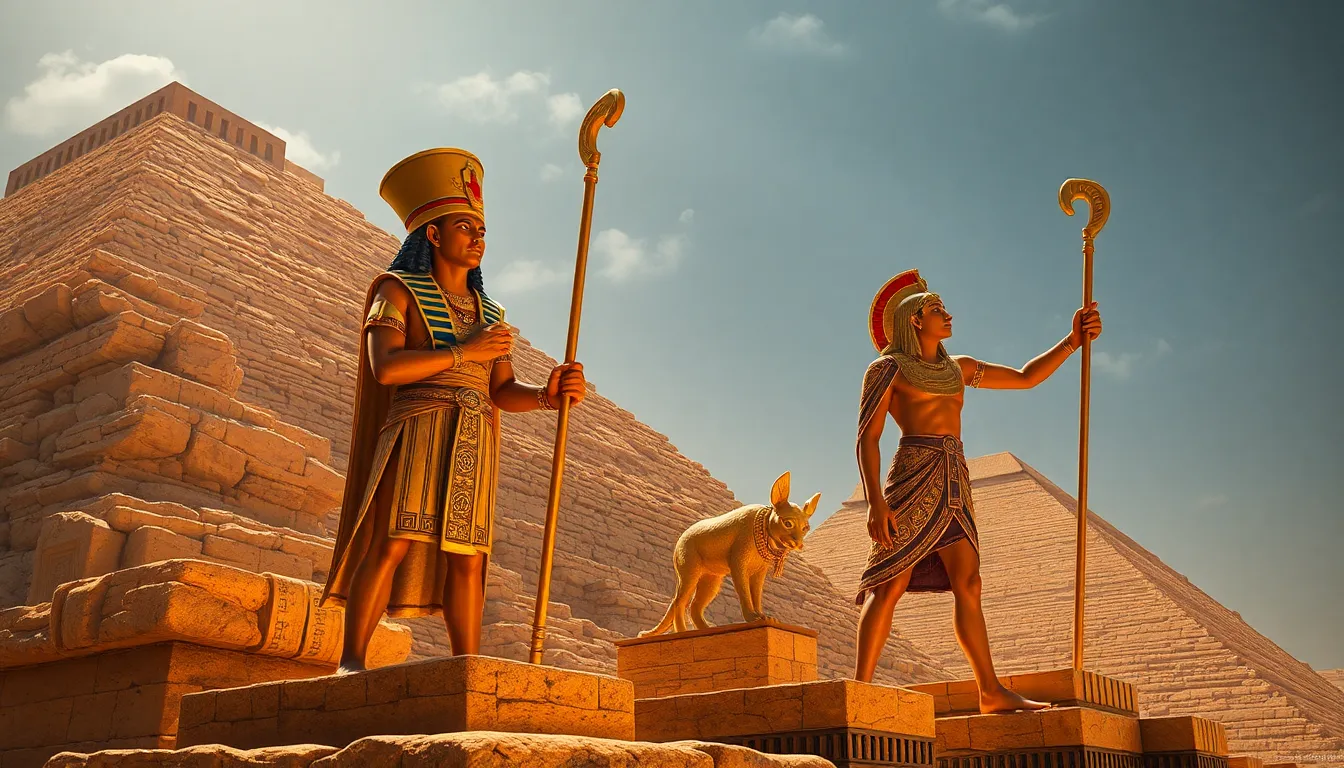The Story of Pharaoh Ahmose: Myths of the Expulsion of Hyksos
I. Introduction
Pharaoh Ahmose is a significant figure in ancient Egyptian history, known for his pivotal role in the expulsion of the Hyksos and the subsequent reunification of Egypt. His reign marked the beginning of the New Kingdom, a period characterized by monumental achievements in art, architecture, and military prowess. The Hyksos period, which preceded Ahmose’s rise, was marked by foreign rule and cultural exchange that profoundly influenced Egyptian society.
This article aims to explore the myths and historical narratives surrounding Pharaoh Ahmose, focusing on his legendary origins, military campaigns, and lasting legacy in the context of the Hyksos expulsion.
II. Historical Context: The Hyksos Invasion
The Hyksos were a group of Asiatic people who invaded and settled in Egypt around the 17th century BCE, establishing their rule in the Nile Delta. Their presence marked a significant shift in the socio-political landscape of Egypt:
- Origin and Rule: The Hyksos came from the Levant and dominated Egypt for approximately a century, introducing new technologies such as the horse-drawn chariot.
- Political Landscape: The period was marked by fragmentation, with local Egyptian rulers in Thebes resisting Hyksos control.
- Cultural Impact: Despite being foreign rulers, the Hyksos adopted many aspects of Egyptian culture, leading to a unique blend of traditions.
III. Pharaoh Ahmose: Rise to Power
Ahmose was born into a royal family, likely the son of Pharaoh Seqenenre Tao and Queen Ahhotep. His early life was shaped by the ongoing conflict with the Hyksos:
- Background: Ahmose’s lineage positioned him as a key figure in the resistance against foreign rule.
- Ascension: After the death of his brother, Ahmose ascended to the throne as a young king, determined to reclaim Egypt from the Hyksos.
- Theban Resistance: Ahmose played a crucial role in rallying support among the Thebans, leveraging both military and diplomatic strategies.
IV. The Mythology Surrounding Ahmose
The life and reign of Ahmose are steeped in mythology, with several legendary accounts highlighting his divine favor:
- Birth and Divine Favor: Myths suggest that Ahmose’s birth was heralded by omens and prophecies, indicating his destined role as a liberator.
- Dreams and Prophecies: Dreams played a significant role in Egyptian culture, and Ahmose is said to have received divine messages guiding his actions against the Hyksos.
- Symbolic Actions: Ahmose’s military campaigns are often interpreted symbolically, representing the triumph of order over chaos.
V. The Military Campaign Against the Hyksos
Ahmose’s military campaigns against the Hyksos were marked by strategic planning and decisive battles:
- Strategies: Ahmose employed a combination of guerrilla tactics and conventional warfare, utilizing the element of surprise against the Hyksos strongholds.
- Key Battles: The siege of Avaris, the Hyksos capital, was a turning point, showcasing Ahmose’s ability to unite various Egyptian factions against a common enemy.
- Allies: Ahmose formed alliances with local tribes and mercenaries, enhancing his military strength and resources.
VI. The Aftermath of the Expulsion
Following the successful expulsion of the Hyksos, Egypt underwent significant changes:
- Reconstruction: Ahmose initiated extensive rebuilding projects, restoring temples and infrastructure that had suffered during the Hyksos occupation.
- New Kingdom Contributions: His reign laid the foundation for the New Kingdom, a period of unprecedented wealth, power, and cultural achievement.
- 18th Dynasty: Ahmose’s success established the 18th Dynasty, which produced some of Egypt’s most famous rulers, including Hatshepsut and Ramses II.
VII. Legacy of Pharaoh Ahmose
The legacy of Pharaoh Ahmose is multifaceted, blending historical facts with mythical interpretations:
- Historical Interpretations: Historians view Ahmose as a unifying figure who restored Egyptian sovereignty and laid the groundwork for future prosperity.
- Art and Literature: Ahmose is depicted in various forms of Egyptian art, often associated with themes of victory and divine favor.
- National Identity: His successful expulsion of the Hyksos became a symbol of Egyptian nationalism, influencing how Egyptians viewed themselves and their history.
VIII. Conclusion
In summary, Pharaoh Ahmose’s story is a compelling blend of history and mythology, illustrating his importance in the expulsion of the Hyksos and the establishment of the New Kingdom. The interplay between myth and history enriches our understanding of his legacy, showcasing how narratives evolve over time.
As we reflect on Pharaoh Ahmose’s contributions, it becomes clear that preserving historical narratives is crucial in appreciating the complexities of ancient civilizations and their enduring impact on modern identity.




